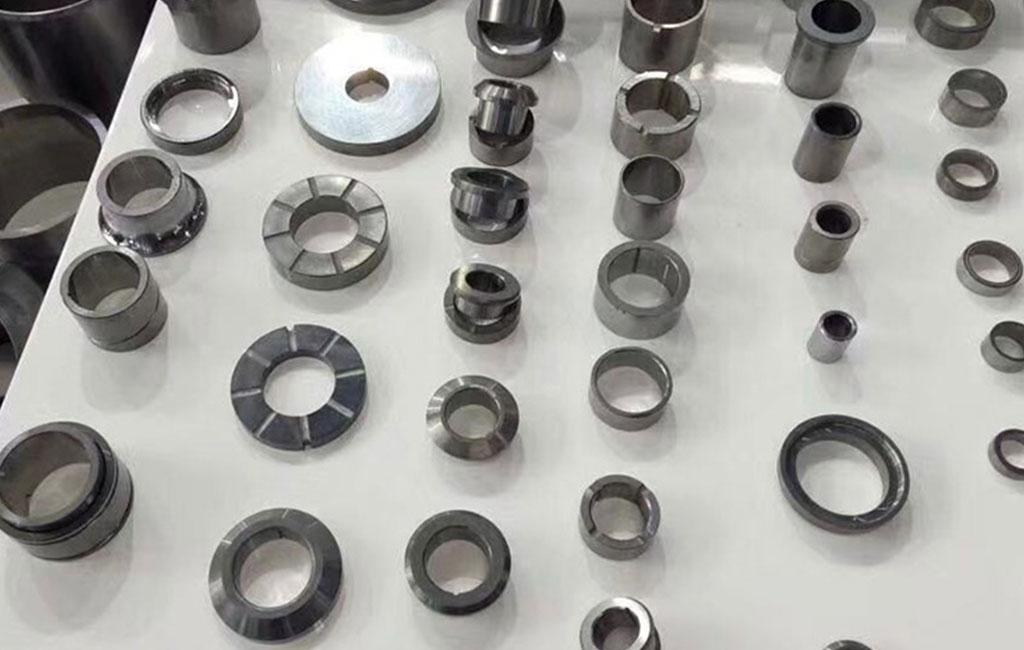
What Is Tungsten
Tungsten, also known as wolfram, is a critical material with numerous industrial applications due to its extraordinary properties, including such as high density, hardness (approximately 7.5 on the Mohs scale), and a melting point of approximately 3422°C (6192°F). Despite its significance, machining tungsten due to its brittleness, leading to tool wear, poor surface finish, and limited material removal rates, these same properties that make tungsten valuable also pose substantial challenges during machining processes. The efficient machining of tungsten is essential to meet the growing demands of various industries, ranging from aerospace to electronics.
How Heavy Is Tungsten?Tungsten boasts several intriguing physical properties that set it apart. With an atomic number of 74 and an atomic weight of approximately 183.84 u, it ranks as one of the heaviest elements. Its high melting point of 3422°C (6192°F) makes it resistant to extreme temperatures, rendering it suitable for applications in harsh environments. Tungsten also possesses a remarkable density of 19.25 grams per cubic centimeter (g/cm³), making it over 1.7 times denser than lead. This exceptional density contributes to its various applications across industries.
How Hard Is It To Machining Tungsten – And Machining Solve Methods
Machining tungsten alloy can be a challenging task due to its unique properties. Tungsten alloys are materials formed by combining tungsten with other elements, such as nickel, copper, iron, or cobalt, to improve specific properties like ductility, toughness, and machinability. While these alloys offer enhanced properties over pure tungsten, they can still present difficulties during the machining process. The hardness, brittleness, and high melting point of tungsten alloys are the primary factors that make machining challenging.
- Hardness: Tungsten alloys are known for their high hardness, which can range from 20 to 30 HRC (Rockwell hardness scale). This hardness significantly exceeds that of conventional machining tool materials. As a result, cutting tools used in machining tungsten alloys can wear rapidly, leading to shorter tool life and increased production costs.
- Brittleness: Tungsten alloys, especially those with higher tungsten content, tend to be more brittle than other metals. This brittleness can cause issues during the machining process, leading to chipping or cracking of the workpiece or cutting tool.
- High Melting Point: Tungsten alloys have a remarkably high melting point, which is approximately 3000°C (5432°F) for most common compositions. This high melting point requires specialized machining equipment and cutting tools capable of withstanding extreme temperatures.
To overcome the challenges of machining tungsten alloys, several strategies are employed:
- a. High-Speed Machining: Implementing high cutting speeds and feeds can help reduce contact time between the tool and workpiece, minimizing heat generation and tool wear.
- b. Advanced Cutting Tools: The use of cutting tools with ultra-hard materials like polycrystalline cubic boron nitride (PCBN) or diamond coatings improves tool life and performance.
- c. Proper Cooling and Lubrication: Effective cooling methods, such as using cutting fluids or cryogenic cooling, can help dissipate heat and reduce friction during the machining process.
- d. Optimal Cutting Parameters: Identifying the appropriate cutting speeds, feeds, and depths of cut can strike a balance between material removal rate and tool wear.
- e. Controlled Machining Environment: Maintaining a stable and controlled machining environment helps reduce the risk of workpiece deformation and tool failure.
Machining tungsten alloys can be challenging due to their hardness, brittleness, and high melting point. However, with advanced cutting tools, proper machining parameters, and effective cooling techniques, manufacturers can overcome these challenges and achieve efficient and precise machining of tungsten alloys for various industrial applications.
Machining tungsten alloy materials involves selecting the right equipment, with the right partner who can customize, deploy and support your manufacturing and purchasing strategies. With BE-CU, you’ll not only get one-stop metal cnc machining service and you’ll receive the support and solve all your doubts about machining & production.
Machining Tungsten Service – CNC Tungsten Machining
Looking for people who have direct experience with machining tungsten? Here, at Be-Cu.com, we want to provide you with some helpful advice on how to handle this carbide alloy. If you are looking to use this material to make parts, and have had trouble in the past, or have never dealt with it before, Be-Cu prototype is here with years of personal experience to guide you through the process.
Due to the carbide alloy’s hardness and how difficult it is to machine, most machine shops shy away from working with pure tungsten and other tungsten grades and alloys—but we don’t.
At Be-Cu cnc workshop,Tungsten can be machined by turning, milling, or drilling. For thick-walled parts, slight preheating of the work to 400 oF is sometimes helpful, otherwise a highly chlorinated oil such as trichloroethylene is used.It is important to keep complete control over your heating when machining tungsten, as too much of a heat buildup will cause the alloy to warp. When tooling the metal you must be sure that feathered or wire edges are taken off the tools. And as you always would, make sure every tool is consistently inspected.
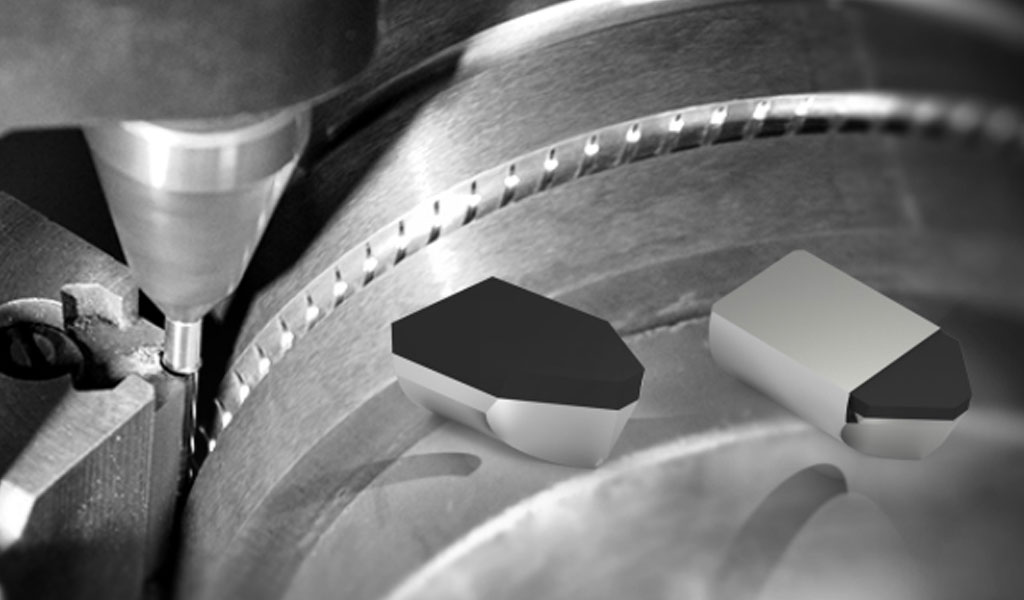
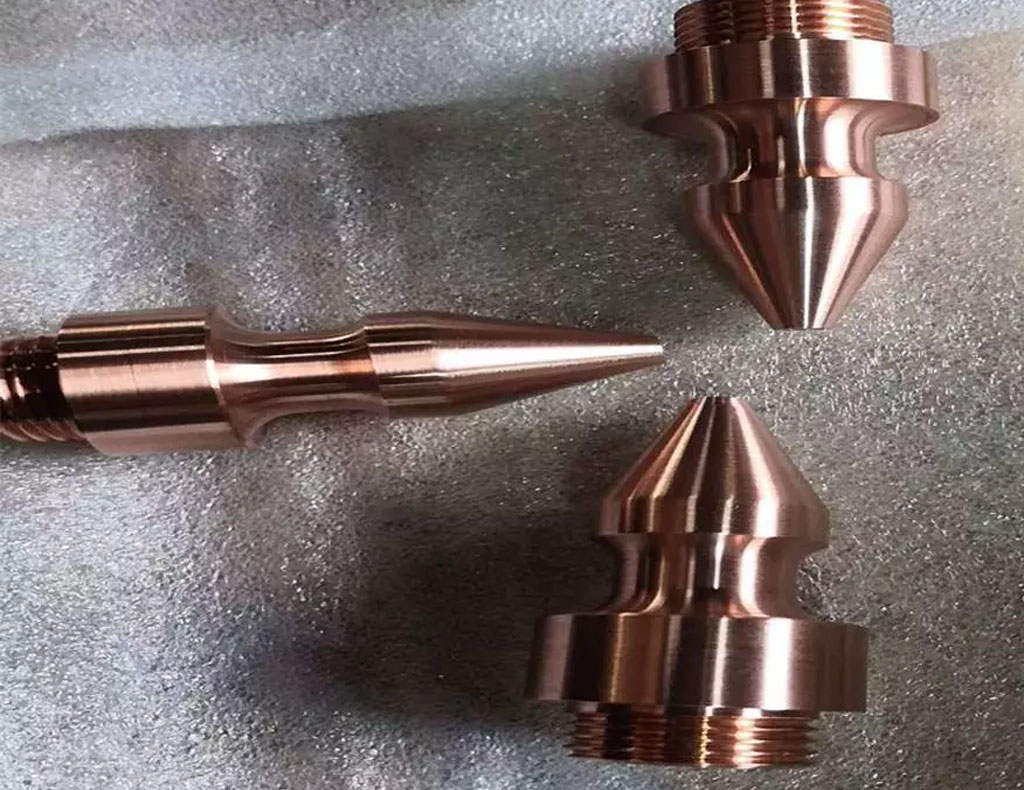
Tungsten Alloy Machining
Tungsten alloys are metallic materials composed mainly of tungsten along with other elements such as nickel, copper, iron, or cobalt. These alloys are engineered to have a high density, excellent mechanical properties, and good radiation shielding capabilities. They are commonly used in aerospace, defense, medical, and other high-performance applications.
Machining tungsten alloys can be challenging due to their hardness and density. Tungsten alloys are generally harder than many other metals, including steel. As a result, they can be more difficult to cut and shape using traditional machining processes. Specialized cutting tools and techniques are often required to work with tungsten alloys, and machining times may be longer compared to less dense materials.
Tungsten Steel Machining
Tungsten steel, also known as high-speed steel (HSS), is a type of tool steel that contains tungsten, along with other alloying elements like chromium, vanadium, and molybdenum. Tungsten steel is widely used for making cutting tools and metalworking tools like drills, milling cutters, and lathe tools. It offers high hardness, wear resistance, and heat resistance, making it suitable for cutting and shaping other materials.
Machining tungsten steel is generally easier compared to machining tungsten alloys. While tungsten steel is harder than regular carbon steels, it is softer than tungsten alloys. Consequently, standard machining processes like turning, milling, and drilling can be employed effectively with appropriate cutting tools and cutting parameters.
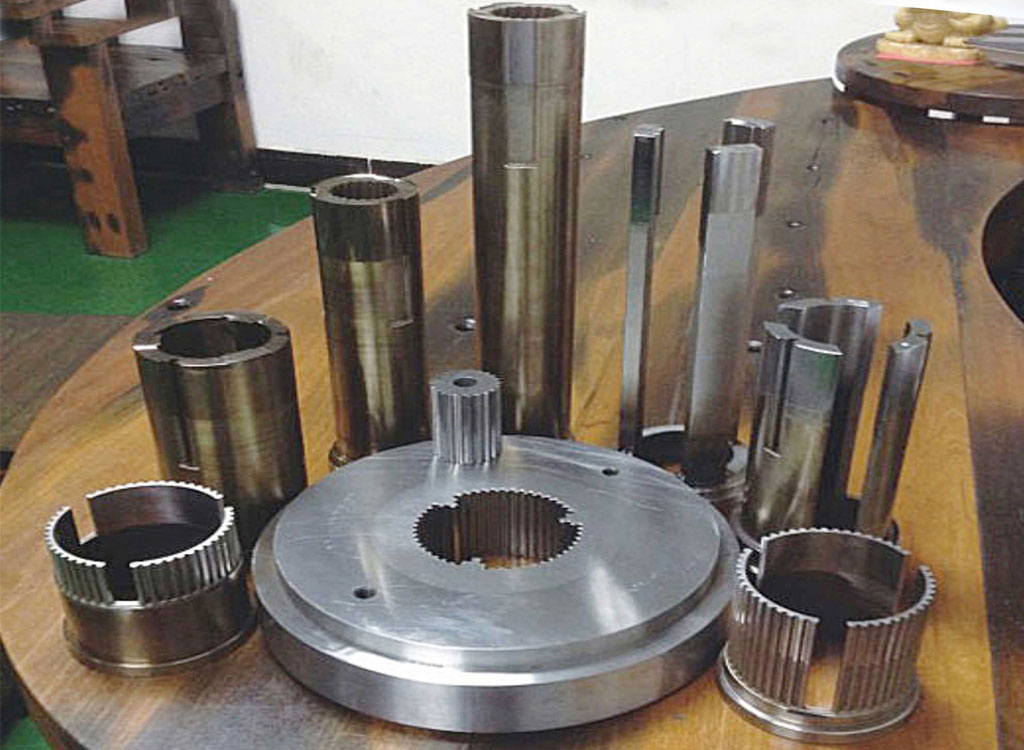
Whether you are machining this carbide alloy from block or tube, or Forming and Stamping or manufacturing powder metallurgy mold, we can heat-treat components to optimize the physical properties based on the application. We utilize cutting-edge CNC milling equipment, including 5-axis milling, and a wide range of advanced technology software to create custom components based on your specific requirements.As an industry AS9100 and ISO9001:2015 certified machine shop, we can ensure you will receive the high-performance tungsten alloy components you want with the mission-critical configurations you need.Contact a Be-Cu CNC expert or submit an RFQ online and let us start machining tungsten alloy to your specifications.
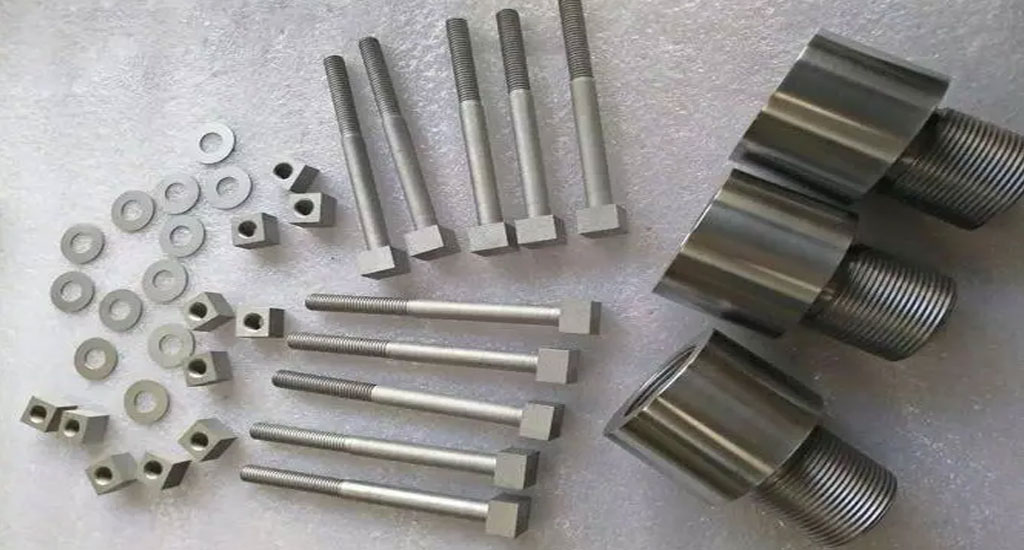
Tungsten Machining Capabilities
With years of machining mission-critical tungsten components, Be-Cu has accumulated the knowledge and expertise needed to reliably produce high-quality tungsten alloy machined parts. Throughout our tenure as a precision CNC machining shop, we have developed a reliable, cost-effective tungsten material manufacturing steps to ensure our customers receive the best possible value.
Turning Tungsten
Milling Tungsten
Grinding Tungsten
Electrical Discharge Machining
Drilling Tungsten
Sawing or Cutting
Why Choose Our Tungsten Cnc Machining Service?
- Save time and money for your tungsten project but quality guaranteed.
- High productivity, outstanding efficiency and high accuracy
- A wide range of tungsten grades and alloy materials can be machined
- Custom complex tungsten machined parts and components at specific tolerances
- High speed machining for prototyping and low to high volume production runs
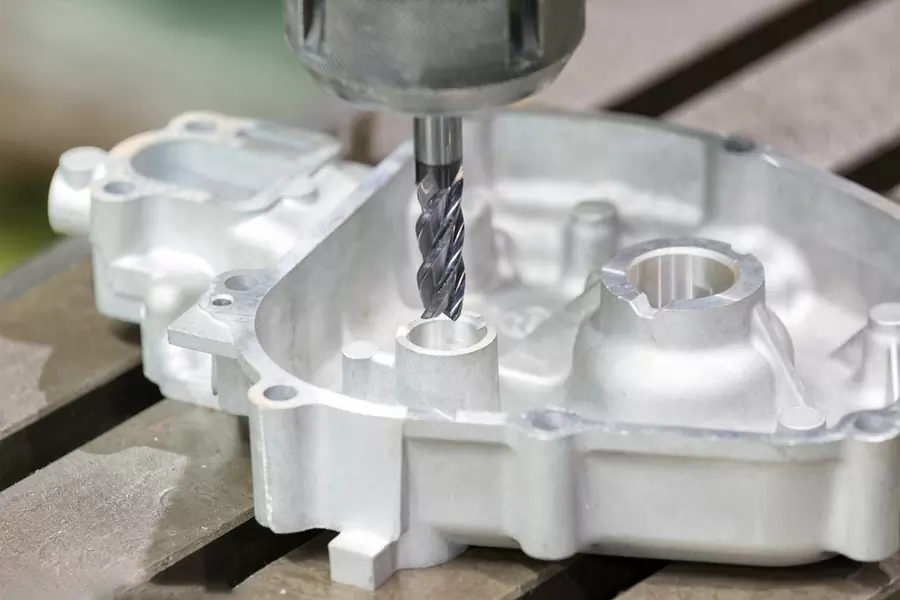
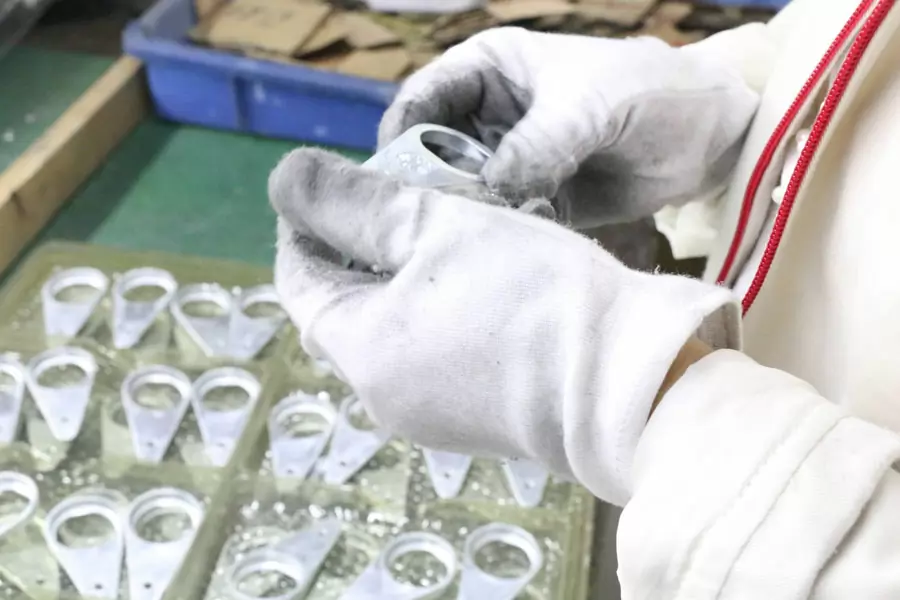
Certifications & Quality Machining
- ISO 9001:2015 certified
- Fully compliant with the exacting requirements of our customers
- Compliance in DFARS materials sourcing requirements
- Strict compliance with PPAP and Process
- FMEA for automotive customers
- Skilled in KanBan and CMM Inspection and inventory management systems
- ITAF 16949 certified
Top China Tungsten Cnc Machining Parts & Case Studies
Manufacturing processes such as cnc milling, turning and powder metallurgy mold are today considered the most economic way to make tungsten parts. Sometimes, however, certain non-machiningable materials are needed, and sometimes 3d printing is the only option. Our company has rich experience making tungsten concept models and precise functional components. Understanding the properties of different tungsten alloy, with lots of testing and experimentation with pre-heating, tool paths and other factors, we are able to minimize deformation on magnesium alloy. Be-cu prototyping company provides a range of solutions for the machining of tungsten parts.
-

Precision Grinding Tungsten Steel Mold Parts
-

Special-Shaped Non-Standard Medical Device Needles
-

Precision Tungsten Copper Alloy Eccentric Insert
-

Carbide Tungsten Valve Seat For Oil And Gas Industry
-

Custom Hexahedron Tungsten Dnd Dice
-
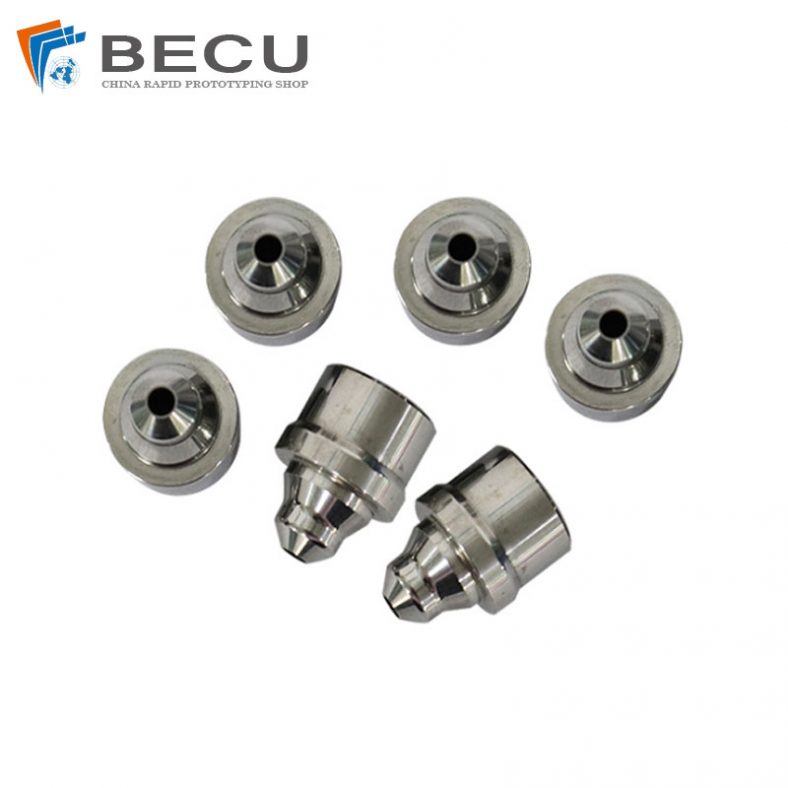
Tungsten Carbide 3D Printer Nozzle
-

Sintering YG6 Tungsten Alloy Non-Slip Thread Screw
-
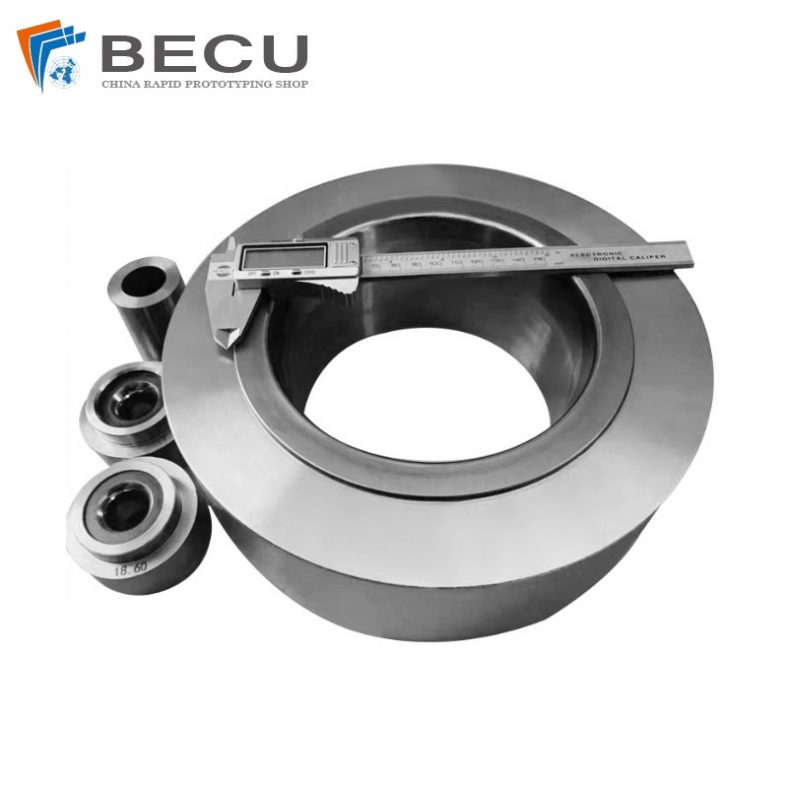
YG15 Tungsten Cobalt Cemented Carbide Parts
-
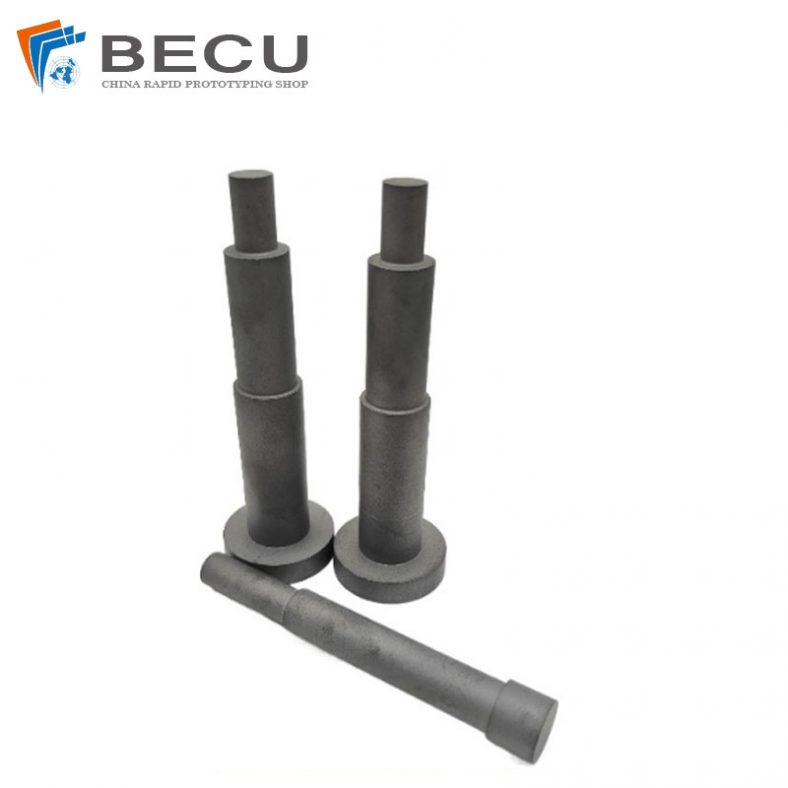
CNC Machining Tungsten Cobalt Carbide Punch
The Tungsten Alloy Material Chart Of Cnc Machining
Tungsten alloy materials come in various compositions and are categorized based on their tungsten content and the presence of other alloying elements. The most common types of tungsten alloy materials used in various applications are as follows:
High-Density Tungsten Alloy (HD17, HD18, HD18D, etc.)
These alloys are primarily composed of tungsten (W) combined with small amounts of other elements like nickel (Ni), iron (Fe), and copper (Cu). They are known for their high density, exceptional strength, and resistance to wear and corrosion. These alloys are often used in aerospace, defense, and medical industries for applications such as balance weights, radiation shielding, and kinetic energy penetrators.
Cemented Carbide (Tungsten Carbide)
Cemented carbides are composite materials made of tungsten carbide particles (WC) held together by a binder phase, usually cobalt (Co) or nickel (Ni). Cemented carbides are renowned for their extreme hardness, making them suitable for cutting tools, drilling bits, and wear-resistant components.
Heavy Tungsten Alloy (W-Ni-Fe, W-Ni-Cu)
These alloys typically consist of a mix of tungsten, nickel, and iron or copper. They possess high density and are used in applications such as ballast weights, vibration dampers, and aerospace components.
Tungsten-Nickel-Copper (W-Ni-Cu)
This type of tungsten alloy often contains a combination of tungsten, nickel, and copper. It offers a balance of density, machinability, and electrical conductivity, making it useful for electrical contacts, radiation shielding, and aerospace components.
Tungsten-Nickel-Iron (W-Ni-Fe)
Tungsten alloys with nickel and iron are used in various applications, including counterweights, balance weights, and rotating inertia members.
Tungsten-Rhenium (W-Re)
Tungsten-rhenium alloys combine tungsten and rhenium (Re) to improve high-temperature strength and ductility. They find applications in aerospace and electronics, such as in thermocouples and high-temperature heating elements.
Please note that this chart is for informational purposes only, and actual compositions and applications may vary:
| Tungsten Alloy Material | Tensile Strength (MPa) | Elongation at Break (%) | Yield Point (MPa) | Density (g/cm³) | Maximum Temperature (°C) | Tensile Modulus (GPa) |
|---|---|---|---|---|---|---|
| Tungsten Heavy Alloy | 700 – 1100 | 10 – 30 | 400 – 900 | 17.0 – 18.5 | 800 – 1000 | 300 – 320 |
| Tungsten Copper Alloy | 500 – 800 | 5 – 15 | 350 – 700 | 15.6 – 17.0 | 400 – 500 | 300 – 320 |
| Tungsten Nickel Copper Alloy | 600 – 900 | 5 – 20 | 300 – 800 | 16.5 – 18.0 | 600 – 800 | 250 – 300 |
| Tungsten Nickel Iron Alloy | 600 – 1000 | 10 – 25 | 400 – 900 | 16.5 – 18.5 | 600 – 800 | 300 – 320 |
| Tungsten Silver Copper Alloy | 300 – 500 | 10 – 30 | 250 – 400 | 11.0 – 15.0 | 400 – 500 | 150 – 180 |
| Tungsten Lanthanum Alloy | 600 – 900 | 5 – 20 | 400 – 800 | 17.0 – 18.5 | 800 – 1000 | 320 – 350 |
Each type of tungsten alloy material has its own set of properties and applications, and the choice of material depends on the specific requirements of the intended application. When selecting a tungsten alloy material for CNC machining or any other manufacturing process, it’s crucial to consider factors such as density, strength, hardness, thermal stability, and machinability to ensure the best performance and efficiency for the given application.
Online Cooperate With Tungsten Machining Company
Be-cu works with customers all over the world to bring customers ideas to life with the highest quality precision engineered tungsten alloy components on the planet. We have both precision 5 axis machining and molds making capabilities that include both conventional and modernized production line. If you are looking for a partnership to help you apply new tools and technologies, or help you fully realize your design vision, let us help you move your business forward, contact our team ([email protected])or quote online today to get the conversation started.
